Killer Heat in Lahore
Summer in the emergency room of Pakistan’s largest hospital
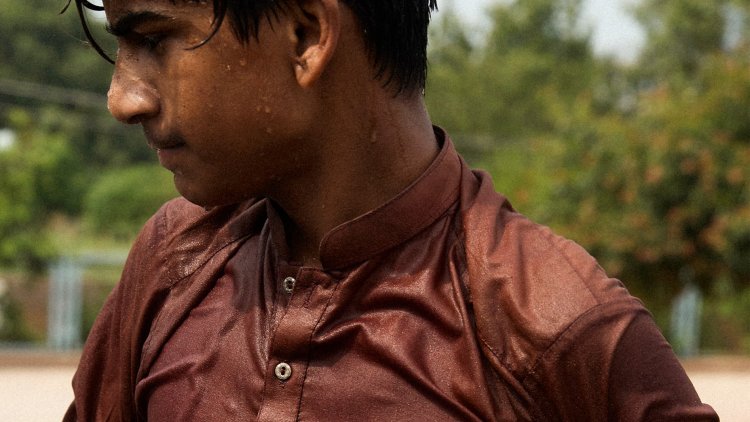
One broiling Friday last month, I visited the emergency room of Mayo Hospital, the largest hospital in Pakistan. For more than 150 years, it has stood just outside the Old City of Lahore, not far from the marble domes of the Badshahi Mosque. Every day, more than 1,000 people fill its wards. No one is turned away. Patients come from all corners of Lahore, from the sugarcane fields outside the city and from far-off villages. In the lobby, some of them rolled past me in wheelchairs or arrived on makeshift stretchers. There was terrible wailing and occasional screaming. The 49-year-old head of the emergency department, Dr. Yar Muhammad, walked me over to where patients were categorized according to urgency. Earlier this summer, he had added a new intake counter. It is devoted exclusively to patients afflicted by Lahore’s extreme heat.
The Lahori poet Kishwar Naheed once wrote that “the sun spends itself” in Pakistan. In recent years, its expenditures have increased. In May, temperatures rose into the 120s. Schools were closed so that kids would not get heatstroke during their commute or on the playground. In Lahore, the heat is not only cruel; it is two-faced. Moist air from the monsoon creeps north from the Indian Ocean in July. The towering ranges of the Himalaya, the Hindu Kush, and the Karakoram corral it into storms that mellow the city’s temperatures without easing the discomfort felt by its residents. I learned this the hard way that very morning. A three-hour downpour had struck overnight, but by 9 a.m., the ground was mostly dry. The rain had evaporated into a thick layer of street-level humidity. It was not the genteel dab-your-forehead variety that you might experience in August in Washington, D.C. It singed your face like steam.
Muhammad showed me into the hospital’s intensive care unit. Along its back wall, four cubicles were separated by white partitions, about shoulder-high. In the leftmost one, a 35-year-old woman named Saira Shehzad was lying flat on a bed, drifting in and out of consciousness. She wore a pink-and-red shalwar kameez and gold earrings. Her face would go blank for a few seconds and then flash alive with intense confusion, followed by terror. Her eyes had difficulty focusing. Her mother sat next to her bed, cradling her daughter’s head in one hand and pressing a cool sponge to her cheek with the other.
Shehzad lives in Faisalabad, a few hours away. She had arrived in the city the previous week for her brother’s wedding. She was staying at her mother’s house with her husband and three children, all in close quarters. The house is in the old city, a single square mile where roughly 200,000 people live surrounded by crumbling walls built by the Mughals centuries ago. Shehzad’s mother cannot afford to cool her house with air-conditioning. Few Lahoris can. In summer, a monthly electricity bill can easily exceed the average person’s take-home pay. In a city of 14 million, nine out of 10 people lack air-conditioning. The novelist Mohsin Hamid has described them as “the great uncooled.” Their annual suffering is one reason—but only one—that Pakistan consistently ranks among the countries most menaced by climate change. In its megacities, the human cost of this, one of Earth’s hottest recorded summers, is not an abstraction.
Temperature highs hovered near 100 degrees Fahrenheit in Lahore during the week I was there. Dew points rose into the 80s. For days, Shehzad had felt faint and overwhelmed. Her brother’s wedding was over, but she still had lots of family around. She wanted to push through, help out. She rose from her bed that morning to fix breakfast in her mother’s small kitchen. She took a tea kettle down and placed it on the stove. She began to knead dough for naan. Nausea began to churn inside her. From the next room, her mother heard a crash. She found Shehzad on her knees, vomiting violently. The whole family piled into a rickshaw to the hospital. Shehzad’s mother cried the whole way. Her husband had died two years ago. She could not bear the thought of losing Shehzad too.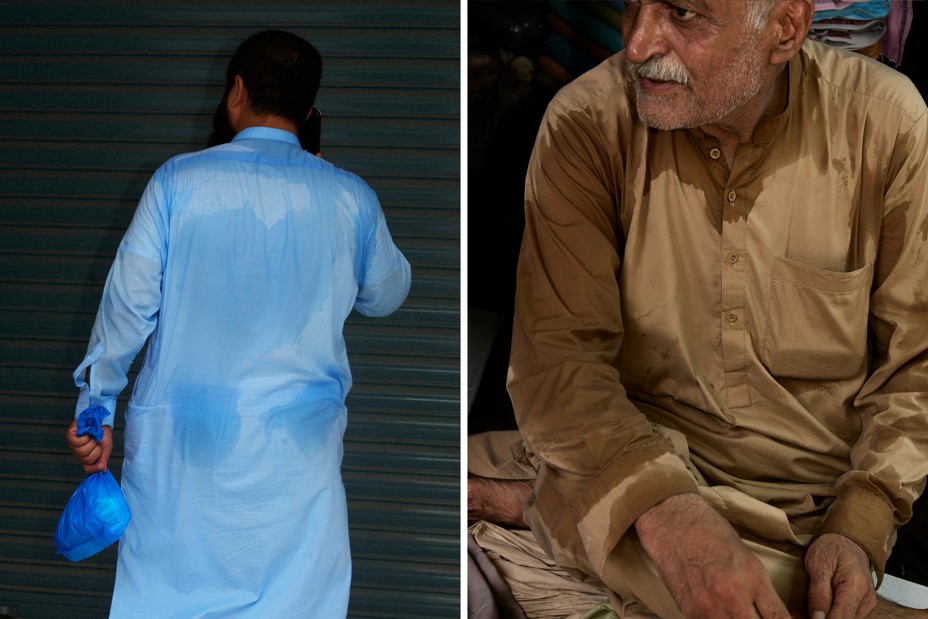
The human cooling system is specific to our species. It is not some standard off-the-shelf mammalian kit. Our prehuman ancestors may have panted out their heat like dogs and foxes, or, I suppose, rolled around in mud like pigs, but we sweat from millions of pores spread across our naked skin. This system functions only within a tiny range of temperatures that maxes out at a wet-bulb temperature of 95 degrees. Many places on Earth, including Lahore, already get hotter than that for long stretches that will only lengthen in the years to come.
[Read: I went to Death Valley to experience 129 degrees]
Muhammad told me that heat-afflicted patients are usually carried into his emergency room unconscious. His staff tries to bring their body temperature down quickly, before brain damage sets in. Nurses wedge ice packs into a patient’s armpits and groin, and sometimes even cool them from within by pumping cold water through a tube into their upper stomach. Shehzad had already been treated with ice packs and an IV. Nurses had spread damp cloths across her torso and arms. Muhammad said that we could return to check on her, but that for the moment, we should let the staff do their work.
We sat down to chat in Muhammad’s office, three floors above the ICU. He seemed determined to live up to Lahore’s ancient reputation for hospitality. (“A sense of courtly life still lingers there,” a Pakistani friend told me.) Every few minutes, he pressed a small button on the corner of his desk, summoning one of several assistants, all young men, who filled the space between us with a buffet of coffee, tea, and snacks. He told me that he had founded the hospital’s instructional department of emergency medicine in 2018, with only two resident doctors. He now has 31 doctors under his command. The extra staff have been essential during Lahore’s brutal summers. It is the city’s poor who are most often carried to Muhammad’s heat counter, people who can’t afford to fly north to the mountains or to London in high summer. They’re bricklayers, railroad workers who toil on exposed platforms, fruit hawkers, beggars. Or they’re women like Shehzad, who spend the day’s hot hours doing household work in small rooms, without so much as an electric fan.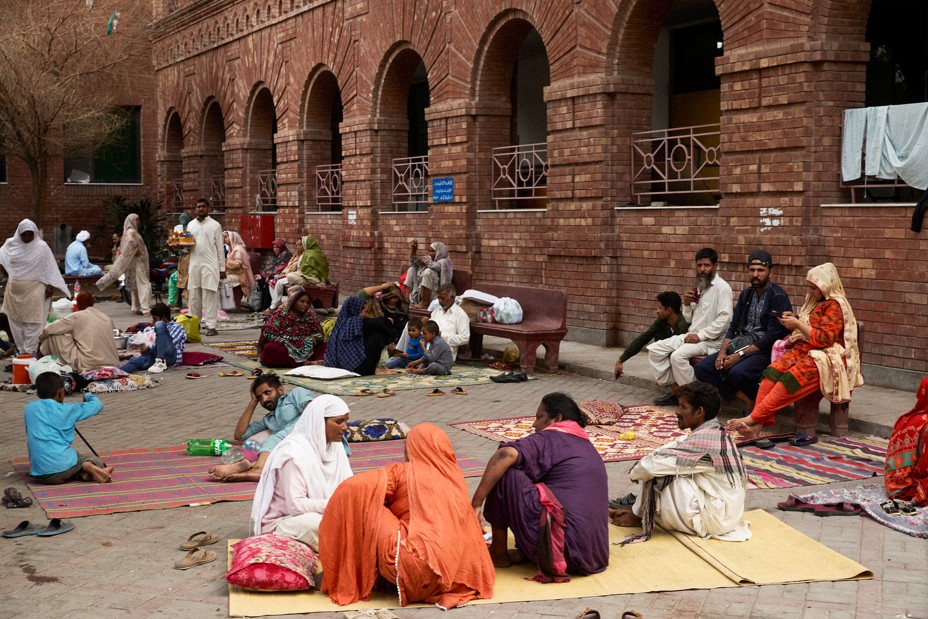
The wealthy are not much troubled by the heat, not in the rich world outside Pakistan and not in Lahore. The sun spends itself, but they spend too, enough to keep themselves comfortable. During the 16th and 17th centuries, the Mughals used an ingenious proto-air-conditioning system. They routed through thin wet netting the breeze that blew off the nearby Ravi River, cooling it along its way into the royal living rooms. That part of the Ravi has since dried up. But in the posh mansions along the leafy Mall Road, or in the Cantt neighborhood, where generals live, there are air conditioners and generators for when the power goes out, as it often does.
Shehzad’s condition worsened while Muhammad and I were upstairs. A preexisting kidney condition was slowing her recovery. Sweat now came off of her in streams. It formed a halo around her on the bedsheet. Her attending doctor told me that the IV was not enough, and that fluid loss had sent her body into shock. In another corner of the ICU, I met a 15-year-old boy who was also suffering from heat exhaustion. He had collapsed in the street while playing cricket and vomited too. But the nurses’ initial cooling treatments—and the air-conditioning in the ICU—reversed his trajectory. His parents started talking about the incident in the past tense. They chided him gently: silly boy, playing cricket in this humidity.
Shehzad’s family was beginning to panic. The nurses were giving her oxygen. She was hyperventilating, her rapid breaths steaming up the mask. Her heart rate lit up red on the EKG machine: 153 beats per minute. The attending doctor had expected her to stabilize by now. Her mother told me that the joy of Shehzad’s brother’s wedding now had a dark twin in the torment of watching her daughter writhe, and worrying that she might not make it.
I arranged to come back and see Shehzad the next day. My driver accelerated away from the hospital and through a few of the city’s many motorbike swarms. At an intersection, we got caught between a pair of old red buses, both decorated with South Asian psychedelia—the intricate leaf-and-petal patterns, the Himalayan idylls, the elephants and lotus flowers surrounded by Urdu script, the hanging fringes. Both buses shot smoke from their tail pipe. Neither had air-conditioning. Through their open windows, I could see passengers pressed together, four to a seat, with no space for any breeze to pass between them—not that there was a breeze. The smog overhead had turned the sun a sickly yellow. Later in the afternoon, it would cause sunset colors to appear ahead of schedule.
[Read: We must learn to love our sweat]
I met Rafay Alam, a local environmental lawyer, at his house, and we drove to an animal hospital on Lahore’s edge. A young vet told us that they were losing lots of dogs to heatstroke and that they’d started lugging big ice blocks into the kennels. Alam said that during a recent heat wave, he’d seen birds and squirrels lying dead in the street. On our way back to the city center, we crossed a bridge over the Ravi. A buffalo moved slowly through the water below, neck-deep, keeping cool. I’d seen a group of young boys doing something similar, splashing around in one of Lahore’s canals. They’d laughed as though they were getting away with something. Maybe they were: Further down the canal, police in green uniforms were trying to keep people from swimming. I watched them rough up two men they’d pulled out of the water.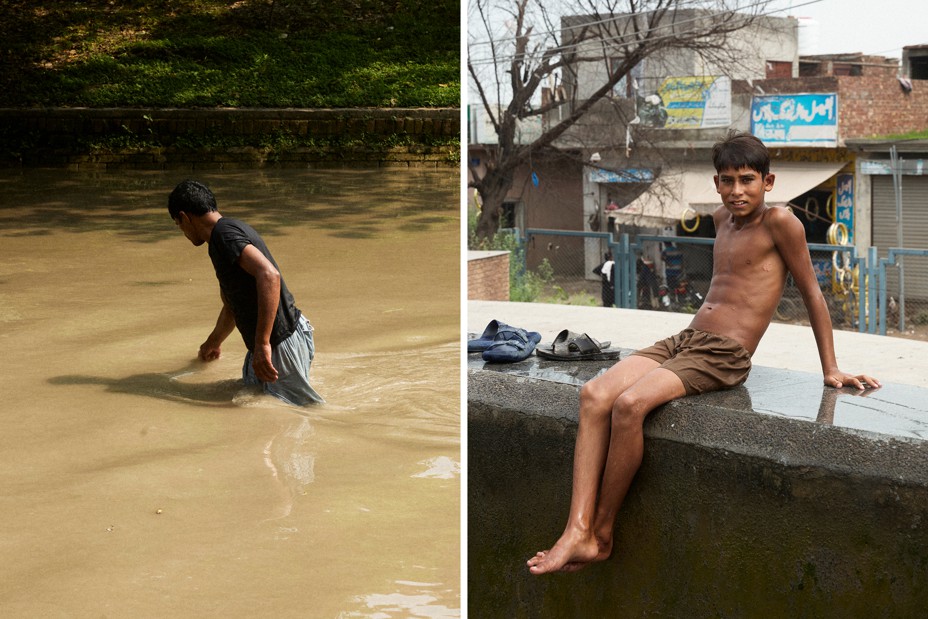
Lahore was once known as the city of gardens, a jewel fought over by empires—the Mughals, but also the raiding Mongols, the Sikhs, and the viceroys of the British Raj. In 1984, its population was 3 million. As its population grew, the city sprawled rapidly outward. More than 70 square miles of cool green forests and fields have been replaced with urban hardscape. All of that concrete has raised temperatures in the city’s core by more than six degrees over the past 20 years. The day’s heat peaks right around the afternoon prayer call and lingers after sunset, trapped in the asphalt and cement. Muhammad had told me that tempers shorten in the summer, as they do elsewhere. His surgeons sew up more gunshot wounds. On the hottest nights, some of the city’s poor haul thin mattresses up to their rooftop to sleep. The polluted sky above them is usually starless.
Urbanization is not a new phenomenon along the Ravi. The Indus Valley Civilization was one of humanity’s earliest urban cultures. Harappa, the first of its ruins to be discovered, sits downriver from Lahore. The following morning, I made the three-hour drive so I could walk among its 5,000-year-old canals and wells. The city was carefully planned and laid out on a grid. It had one of the world’s first sewer systems. Its copper furnace and granary had remained semi-intact even after the British plundered the site’s bricks for a railroad. The Indus Valley people carved about 400 symbols into stone seals—some animal pictograms, others abstract shapes. The symbols have been found throughout their cities and also those of their trading partners in distant Mesopotamia, but they remain undeciphered.
By noon, the mysteries of Harappa’s dusty, shadeless ruins had lost their appeal. The heat index edged up to near 110 degrees. I wanted to get back to see Shehzad one last time. At the hospital, I learned that her condition had stabilized, and that she’d been transferred into the women’s ward, which didn’t have air-conditioning. Her doctor brought me into the ward. A plate-size region of my shirt quickly soaked with sweat as ceiling fans twirled weakly above me. Shehzad was sharing a bed, head to toe, with another woman, a heart-attack survivor who was being embraced by her family members, some of them shaking with sobs. Shehzad was rocking back and forth on the other end of the bed, looking miserable. The ward seemed to be making her condition worse.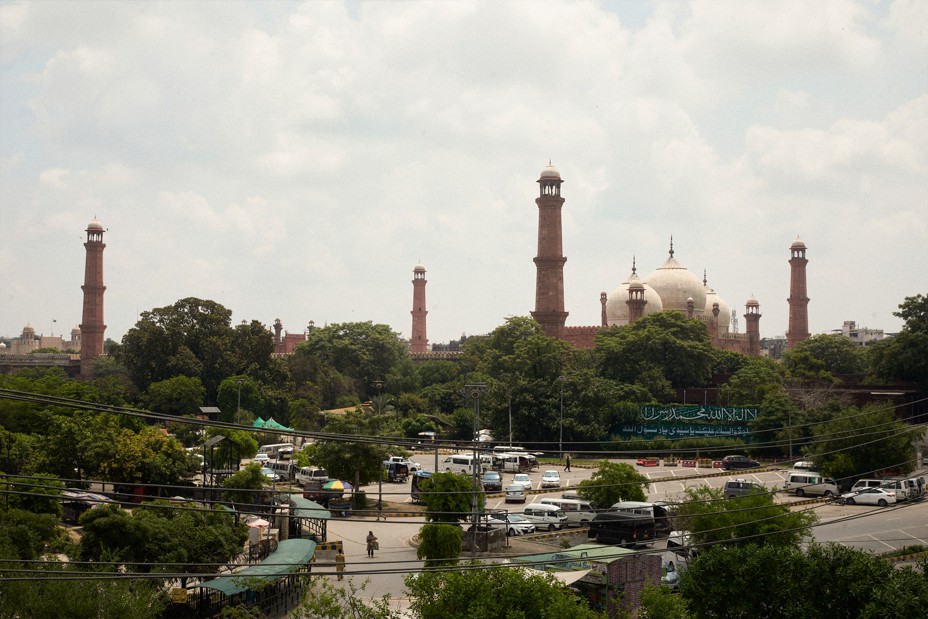
Shehzad’s doctor acknowledged that she would heal faster if they could keep her somewhere cooler. Her body’s thermoregulation system had been thrown into chaos. She even had a bout of chills. They must have been intense: The room was unbearably hot, yet Shehzad had demanded a thick blanket. Her mother used a washcloth to wipe sweat from her face. Shehzad’s husband, brother, and mother-in-law were gathered at her bedside too. They told me that they planned to sleep in the corridor outside the ward that night, huddled together on the tile floor.
I had to leave Pakistan a few hours later. Shehzad’s doctors agreed to keep me updated via WhatsApp. I took a deep breath every time a green notification popped up on my phone. Her condition did not improve that much the next day or the day after. But on the third day, her doctor texted that she’d been discharged. She would soon leave her mother’s house to return with her family to Faisalabad. I had asked if it was more comfortable there. “No, it’s hotter,” the doctor had said.
The whole region will stay humid for another month at least. During the cooler months to come, when there is no monsoon to scrub Lahore’s skies, an even thicker smog will settle on its skyline. On many winter days, it is the world’s most polluted city. Spring eventually arrives, but Lahoris tell me that each is shorter than the last. Shehzad will have to face the heat again next summer. It may be even worse.
What's Your Reaction?




















